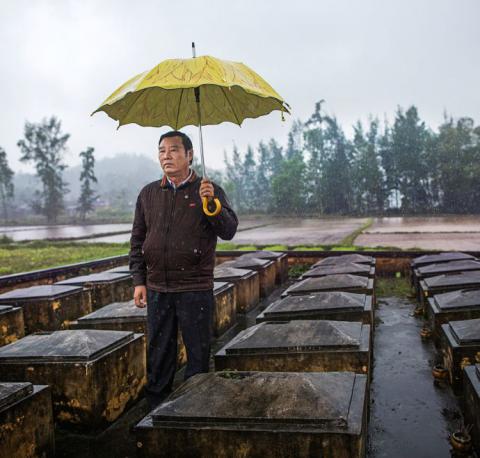There is a long ditch in the village of My Lai. On the morning of March 16, 1968, it was crowded with the bodies of the dead—dozens of women, children, and old people, all gunned down by young American soldiers. Now, forty-seven years later, the ditch at My Lai seems wider than I remember from the news photographs of the slaughter: erosion and time doing their work. During the Vietnam War, there was a rice paddy nearby, but it has been paved over to make My Lai more accessible to the thousands of tourists who come each year to wander past the modest markers describing the terrible event. The My Lai massacre was a pivotal moment in that misbegotten war: an American contingent of about a hundred soldiers, known as Charlie Company, having received poor intelligence, and thinking that they would encounter Vietcong troops or sympathizers, discovered only a peaceful village at breakfast. Nevertheless, the soldiers of Charlie Company raped women, burned houses, and turned their M-16s on the unarmed civilians of My Lai. Among the leaders of the assault was Lieutenant William L. Calley, a junior-college dropout from Miami.
By early 1969, most of the members of Charlie Company had completed their tours and returned home. I was then a thirty-two-year-old freelance reporter in Washington, D.C. Determined to understand how young men—boys, really—could have done this, I spent weeks pursuing them. In many cases, they talked openly and, for the most part, honestly with me, describing what they did at My Lai and how they planned to live with the memory of it.
In testimony before an Army inquiry, some of the soldiers acknowledged being at the ditch but claimed that they had disobeyed Calley, who was ordering them to kill. They said that one of the main shooters, along with Calley himself, had been Private First Class Paul Meadlo. The truth remains elusive, but one G.I. described to me a moment that most of his fellow-soldiers, I later learned, remembered vividly. At Calley’s order, Meadlo and others had fired round after round into the ditch and tossed in a few grenades.
Then came a high-pitched whining, which grew louder as a two- or three-year-old boy, covered with mud and blood, crawled his way among the bodies and scrambled toward the rice paddy. His mother had likely protected him with her body. Calley saw what was happening and, according to the witnesses, ran after the child, dragged him back to the ditch, threw him in, and shot him.
The morning after the massacre, Meadlo stepped on a land mine while on a routine patrol, and his right foot was blown off. While waiting to be evacuated to a field hospital by helicopter, he condemned Calley. “God will punish you for what you made me do,” a G.I. recalled Meadlo saying.
“Get him on the helicopter!” Calley shouted.
Meadlo went on cursing at Calley until the helicopter arrived.
Meadlo had grown up in farm country in western Indiana. After a long time spent dropping dimes into a pay phone and calling information operators across the state, I found a Meadlo family listed in New Goshen, a small town near Terre Haute. A woman who turned out to be Paul’s mother, Myrtle, answered the phone. I said that I was a reporter and was writing about Vietnam. I asked how Paul was doing, and wondered if I could come and speak to him the next day. She told me I was welcome to try.
The Meadlos lived in a small house with clapboard siding on a ramshackle chicken farm. When I pulled up in my rental car, Myrtle came out to greet me and said that Paul was inside, though she had no idea whether he would talk or what he might say. It was clear that he had not told her much about Vietnam. Then Myrtle said something that summed up a war that I had grown to hate: “I sent them a good boy and they made him a murderer.”
for the rest of this article, go to http://www.newyorker.com/magazine/2015/03/30/the-scene-of-the-crime


Spread the word